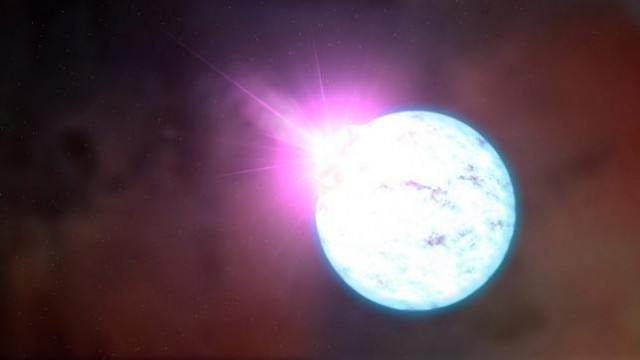Gravitational waves: Why the fuss?
Last December, the European Space Agency launched a lab to seek out gravitational waves in space

PHOTO: REUTERS
We consulted the experts.
Q: What are gravitational waves?
A: Albert Einstein predicted gravitational waves in his general theory of relativity a century ago. They are ripples in space-time, the very fabric of the Universe.
Gene-editing is Science mag’s breakthrough of 2015
The game-changing theory states that mass warps space and time, much like placing a bowling ball on a trampoline. Other objects on the surface will "fall" towards the centre, a metaphor for gravity in which the trampoline is space-time.
When objects accelerate, they send ripples along the curved space-time fabric at the speed of light -- the more massive the object, the larger the wave and the easier it would be for scientists to detect.
Gravitational waves do not interact with matter and travel through the Universe completely unimpeded.
The strongest waves are caused by the most cataclysmic processes in the Universe -- two black holes colliding, massive stars exploding, or the very birth of the Universe some 13.8 billion years ago.
Q: Why would detection of gravitational waves be important?
A: Finding proof of gravitational waves will end the search for a key prediction in Einstein's theory, which changed the way that humanity perceived key concepts like space and time.
If gravitational waves become detectable, this would open up exciting new avenues in astronomy -- allowing measurements of faraway stars, galaxies and black holes based on the waves they make.
So-called primordial gravitational waves, the hardest kind to detect, would boost another leading theory of cosmology, that of "inflation" or exponential expansion of the infant Universe.
Primordial waves are theorised to still be resonating throughout the Universe today, though feebly.
If they are found, they would tell us about the energy scale at which inflation ocurred, shedding light on the Big Bang itself.
Q: Why are they so hard to find?
Long haul, night repairs for British, US spacewalkers
A: Einstein himself doubted gravitational waves would ever be detected given how tiny they are.
Ripples emitted by a pair of orbiting black holes, for example, would stretch a one-million-kilometre (621,000-mile) ruler on Earth by less than the size of an atom.
Waves coming from tens of millions of lightyears away would stretch and squeeze a four-kilometre light beam such as the ones used at the Advanced Laser Interferometer Gravitational Wave Observatory (LIGO) at the centre of Thursday's announcement, by about the width of a proton.
Q: How have we looked for them?
A: So far, gravitational waves have only been detected indirectly.
In 1974, scientists found that the orbits of a pair of neutron stars in our galaxy, circling a common centre of mass, were getting smaller at a rate consistent with a loss of energy through gravitational waves.
That discovery earned the Nobel Physics Prize in 1993. Experts say the first direct detection of gravitational waves is likely to be bestowed the same honour.
After American physicist Joseph Weber built the first aluminium cylinder-based detectors in the 1960s, decades of effort followed using telescopes, satellites and laser beams.
Earth- and space-based telescopes have been trained on cosmic microwave background, a faint glow of light left over from the Big Bang, for evidence of it being curved and stretched by gravitational waves.
‘Hello, is this planet Earth?’ Astronaut dials wrong number on Christmas call from space
Two years ago, American astrophysicists announced they had finally identified gravitational waves using a telescope called BICEP2, stationed at the South Pole.
But they later had to admit they made an error.
Another method involves detecting small changes in distances between objects.
Gravitational waves passing through an object distort its shape, stretching and squeezing it in the direction the wave is travelling, leaving a telltale, though miniscule, effect.
Detectors such as LIGO and its sister detector Virgo in Italy, are designed to pick up such distortions.
At LIGO, scientists split laser light into two perpendicular beams that travel over several kilometres to be reflected by mirrors back to the point where they started.
Any difference in their length would point to the influence of gravitational waves.
Last December, the European Space Agency launched a lab called Lisa Pathfinder to seek out gravitational waves in space.
Sources: European Space Agency, Institute of Physics, LIGO, Nature.



















COMMENTS
Comments are moderated and generally will be posted if they are on-topic and not abusive.
For more information, please see our Comments FAQ